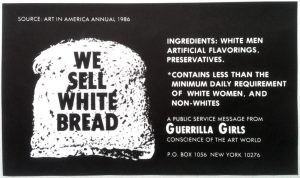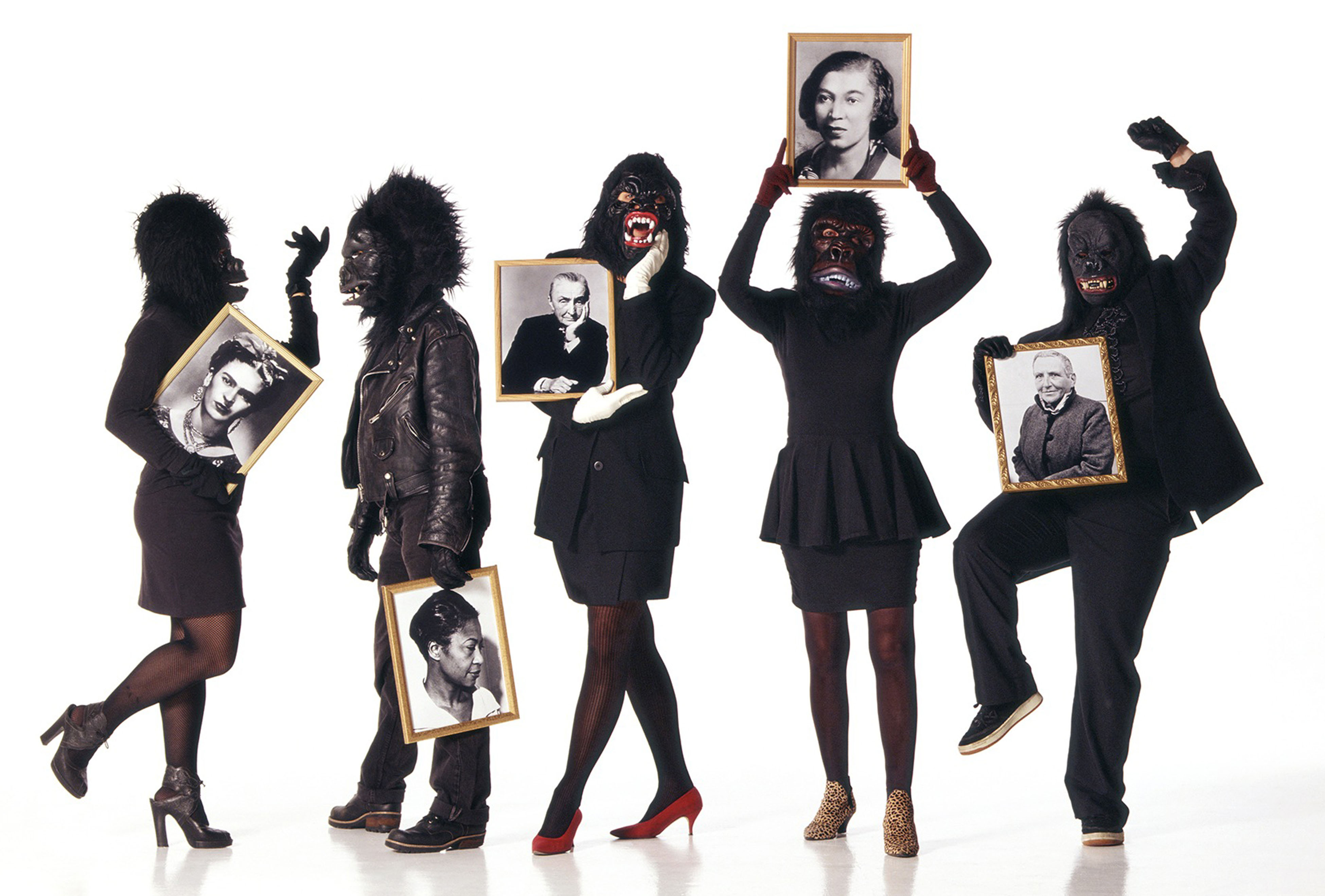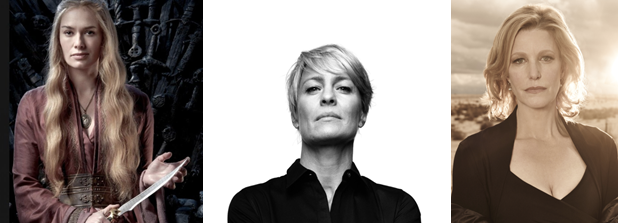By Rory Hibbler

“We could be anyone; we are everywhere.” While this line sounds like it belongs in the latest Marvel movie, it’s actually the catch phrase of a less mainstream sort of superhero: the Guerilla Girls. Formed in 1985, the Guerilla Girls are an all female group of gorilla-masked protestors striving to bring racial and gender equality into the art world. They’re most famous for billboards blatantly pointing out the rampant stereotyping and sexism in art. They are now world famous as their exhibits have been displayed across Europe, Australia, and the United States, including the University of Georgia’s very own Georgia Art Museum. They protest in all sorts of niches of the art world, from the Oscars circa 2002 to the music video scene. Most recently they’ve published books teaching children to criticize art.
So what spurred these protests? Are dozens of gorilla-masked feminists really necessary? Some do not believe so as the Guerilla Girls have spurred quite a controversy. Mary Boone, a prominent art dealer, described their protests as “an excuse for the failure of talent.” Art critic Hilton Kramer called the group “quota queens” just looking for something to whine about. Other critics have pointed out there is no mention of transgender rights or class inequality issues and say the ads come off as offensive and unreasonable.
The Guerilla Girls’ leader, who goes by the pseudonym Frida Kahlo, addresses these criticisms head-on. She said that she purposefully makes her billboards controversial to strike up conversation. When asked to comment on their scope, Frida responded, “We cover a lot of feminist territory in our work and sometimes it’s necessary to be familiar with a lot of our work to realize its range.”* She went on to say that transgender issues are recognized in their book “Bitches, Bimbos, and Ballbreakers” and that they have had transgender members of their group. Kahlo stated, “Transgender rights are among the greatest human rights movements of our time. So it’s not accurate to say we’ve never covered the issue.”
In response to criticisms of their lack of class issues, Kahlo claims their Facebook page calls the art world “a playground of the 1 percent of the 1 percent” and discusses “how the new Guggenheim Museum in Dubai is being built with debt bondage.”
Their art itself has also come under scrutiny. Their most notable poster—involving Jean Auguste Dominique Ingres’ “Grande Odalisque” naked woman painting with a gorilla mask covering the subject’s face—was denied by the Public Art Fund of New York in fear that it would alienate major New York art institutions. Prominent figures in the art community have continued the criticism. Major collector Holly Solomon once criticized the group for wearing “ugly” masks and recommended they wear Cinderella masks instead. Brooklyn Museum Director Robert Buck called out Guerilla Girls for their tendency to focus on specific controversial pieces despite his museum’s overall “exemplary” record.
Despite this eclectic opposition, a radical feminist transformation of art was long overdue. We’ve all heard our feminist friend rant about the average woman making 78 cents to a man’s dollar. However, in the world of art women earn just a third of what men do. From 2008 to 2012, only one out of the 320 most expensive art works sold was created by a woman. In North America, just 25 percent of art museums are female-run.

So battle on Guerilla Girls! After all, art has historically been a form of political protest and a means of expressing discontent with society. Just ask the graffiti artists of the Arab Spring or Ai Weiwei and his scandalous photographs of obscene gestures toward world monuments.
Art can change the world. The street artist, studio owner, photographer, and activist known as JR won a grant in 2011 from the nonprofit educational organization TED to use art to positively impact oppressed communities across the world. He now runs Inside Out, a global art project that helps discontented people plaster portraits in their communities (legally or illegally) to spread any message they feel needs to be addressed. Many of the messages confront divisive social issues. In Tunisia hundreds of posters were pasted over dictator Zine El Abidine Ben Ali’s face. In Russia, Inside Out posted the faces of dozens of homosexual men to raise awareness for the LGBT community that suffers under the current government. Inside Out 11M, a subproject of Inside Out, placed portraits of immigrants in 20 different cities in the United States to address the issue of illegal immigration.
Art’s ability to change society is occurring in more creative ways that one would not always expect. Photographer Brandon Stanton (a UGA Graduate!) started a blog in New York called “Humans of New York” in which he takes pictures of strangers and posts them with inspiring quotes or the person’s own story. This past January he photographed a boy named Vidal and published a story about the boy’s school in Brownsville, New York and his inspiring principal. This led to a fundraiser for the boy’s school that raised over $1 million and led to Vidal and his principal Ms. Lopez meeting President Obama.
So what impact have the Guerilla Girls had? They’ve exposed discrimination in the art world and pointed out facts many have either not noticed or ignored. They’ve stirred up a debate about the role of women in art. They’ve “raised people’s consciousness,” according to former Museum of Modern Art curator Linda Shearer.

Right now the Guerilla Girls are focusing on the film and music industries’ lack of women and people of color “backstage” as well as a body image campaign. As always, they’re developing new political posters calling out art galleries, critics, and sexists. Kahlo did not have any comment on whether or not their new film projects will have to do with the race issues in the Oscars. “All our film work…deals with either exploitation of women or the lack of diversity in the film industry, ” Kahlo says. In the past the Guerilla Girls’ postings on the film industry have pointed out the lack of women directors (only 7 percent in 2005) and the lack of color in the Oscars (3 percent of acting awards went to people of color in 2002). It will be interesting to see their take on this year’s Oscars, with all 20 acting nominees being considered “white” and “Selma” being overlooked for the Best Picture Award, which some claim is due to racial bias.
The Guerilla Girls do agree that things are “better now than they ever have been for women” in the art world, and their constant protesting is no doubt a contributing reason for this. Their art book has sold thousands of copies and many museums that they called out for being discriminatory now feature their work. They’re integrated into art history.
The impact of the Guerilla Girls shows that anyone can be a force of change in the world. Graffiti artists who spray-paint war-torn lands to tell their story; a man who blogged about a school to lift up the hopes of impoverished children; a group of women dressed like bank robbers who glued some posters around New York City to shine light on injustice and ended up as one of the leading feminist icons in the new century.

*Quote obtained from personal interview with “Frida Kahlo”


